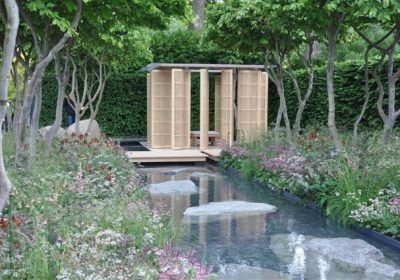Kew Teams Up With The Times For Chelsea 2011
Description
(The Times Eureka Garden, in association with the Royal Botanic Gardens, Kew)
January 2011
The Royal Botanic Gardens, Kew, is delighted to announce that it is working in partnership with The Times to create a garden showcasing, through an eye catching and innovative design by Chelsea gold medallist Marcus Barnett, the significance of plants to science and society. The species chosen for the garden will demonstrate both beauty and utility, including medicinal, commercial, and industrial uses to underline the fact that plants are invaluable to our everyday lives – without them, none of us could live on this planet; they produce our food, clothing and the air that we breathe.
The notion of plants as essential contributors to life on earth motivates much of Kew’s work around the globe. Kew’s scientists and conservationists are working to ensure that the plants that protect our environment continue to thrive, and that their usefulness for mankind is harnessed and enhanced. We maintain the world’s largest Herbarium, one of the world’s most important botanical reference libraries and probably the most diverse living collection of plants in the world. We also lead the Millennium Seed Bank Partnership, a global collaboration operating in more than 50 countries. It is the largest ex-situ conservation project in the world and we have already banked the seeds of 10% of the world’s plant species.
This will be the first show garden Kew has had at the Chelsea Flower Show in many years. The partnership between The Times and the Royal Botanic Gardens, Kew, celebrates a shared commitment to science. The Times is the only national newspaper to have a dedicated monthly science magazine – it launched Eureka in October 2009, which every month devotes 60 pages to covering science, life and the environment.
Professor Stephen Hopper, Director of the Royal Botanic Gardens, Kew, says, “As an organisation, the future and security of the planet’s plants is very close to our heart, and we are continuously dedicated to conveying this message to decision makers and to the general public as a whole. We are therefore truly honoured to have been given this platform, at one of the most celebrated horticultural events in the world, from which we can exhibit a selection of plants that help and contribute to science and to our lives in general.”
Commenting on their shared project at Chelsea, James Harding, Editor of The Times, said, “The Times is delighted to be hosting its first garden at the Chelsea Flower Show, which reflects our passion for exploring and understanding the environment around us – from what makes a beautiful and harmonious garden to the underlying science of plant ecology to the pressing environmental issues of conservation and sustainability that are so central to public debate today. What better place to reflect and take inspiration than in a garden at Chelsea.”
This show garden will be relocated to Kew Gardens following the Chelsea Flower Show (subject to funding and planning agreement), giving an opportunity for anyone who missed Chelsea to see the garden over the summer months. Visitors to Kew will have the added benefit of being able to walk through the garden and to see it against the majestic backdrop of Kew’s historic, UNESCO World Heritage Site landscape, and to see many more beautiful, useful and rare plants in Kew’s gardens and iconic glasshouses.
A prize winning graduate in landscape design, Marcus Barnett established his own design practice and went on to win two RHS Gold Medals at the Chelsea Flower Show in 2005 and 2006 and a Silver Gilt in 2007. Influenced both by modernist architecture and the English garden tradition, he is known for his classically contemporary style, in which bold, abstract geometry, clean lines, and modern materials combine with clipped evergreen shapes and the softening influence of grasses and perennials. His work ranges from urban courtyards, which blur and blend boundaries between indoors and out, to large country house gardens, where the ground is sensitively manipulated to the rhythms of the surrounding landscape.
Marcus Barnett will draw inspiration for this modern garden from plant cells and leaf capillaries, and for the centre piece, a garden pavilion, from Kew’s stunning heritage buildings, such as the Palm House. The garden pavilion will be designed to be a contemporary and light space, serving as a destination from which to view the garden. The capillaries will radiate along the ground and, in places, rise up the boundary hedging, helping to demonstrate the link between plant and materials. The boundary walls will provide seclusion and act as a counterpoint and backdrop to the trees. Marcus Barnett says, “I have never learnt as much about plants as I have since we embarked on this design. The depth of their involvement in our everyday life is extraordinary. The inroads we are making in bioplastics material innovation is equally fascinating. The combination and resonance of these vital elements will be realised when we build the garden in May.”
For the design of the pavilion Marcus Barnett collaborated with award winning architectural practice NEX, whose experience in designing innovative structures and working on projects in the public realm made them an ideal partner. Founding director of NEX, Alan Dempsey, says, “For the pavilion, we extended the design concepts of the garden by looking closely at the cellular structure of plants and their processes of growth to inform the design’s development. The final structure was designed using computer algorithms that mimic natural growth and it is intended to allow visitors to experience the patterns of biological structure at an unfamiliar scale. To further embody the ideas behind the garden, the pavilion will be manufactured from sustainably sourced timber and cellulose derived plastics.” Engineering services were provided by Buro Happold.
Sussex based, The Outdoor Room, are the main contractors for building the show garden. Managing Director, David Dodd, is delighted to be involved with the construction at Chelsea and then relocating the garden back to Kew. He says, “We have worked with Marcus on many projects and we know what a great designer he is, but to have been asked to build a show garden for him at Chelsea is a great honour. On top of that, to be working with The Times and Kew is going to be a fantastic experience for all of our staff.” The Outdoor Room already have four RHS Gold medals and one Silver Gilt. David Dodd adds, “This puts a bit of added pressure on us to maintain that standard, but the team building the garden have the experience and expertise to achieve it.”
The plants that will feature in the garden have been chosen according to their contribution to society. These include Foxgloves (DIGITALIS x mertonensis), which can be used in the treatment for cardiac disease, and Geraniums (GERANIUM sanguineum), often used as a diuretic and to treat kidney complaints – the leaves of which can also be used as mosquito repellent. Other plants that will be used are Salvias (SALVIA blancoana), which is used as a treatment for diseases of the Central Nervous System, and Roses (ROSA webbiana), commonly used by the cosmetics industry and by drinks manufacturers.


